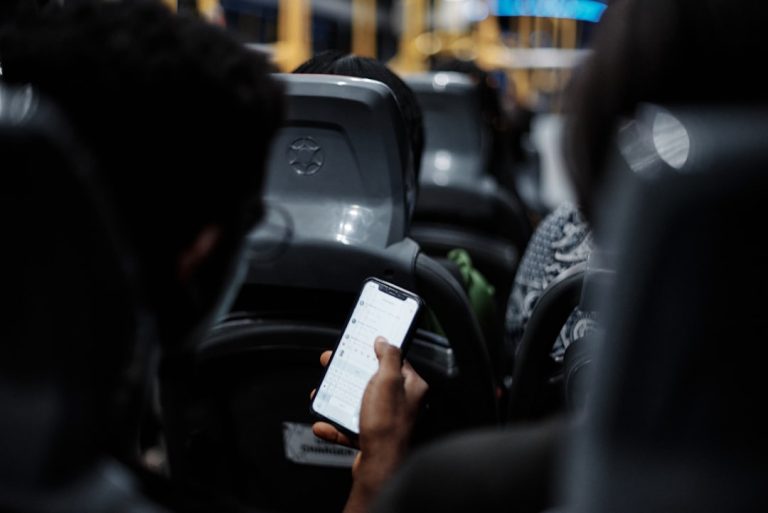
Public transportation serves as a vital lifeline for millions of individuals, providing essential connectivity within urban and suburban landscapes. It encompasses a variety of services, including buses, subways, light rail, and commuter trains, each designed to facilitate the movement of people from one location to another efficiently and affordably. The advantages of public transportation are manifold; it reduces traffic congestion, lowers carbon emissions, and offers an economical alternative to personal vehicle ownership.
For many, especially those in densely populated areas, public transit is not merely a convenience but a necessity that enables access to employment, education, healthcare, and social activities. Understanding the intricacies of these systems—such as routes, schedules, and fare structures—can significantly enhance the user experience and ensure that individuals can navigate their cities with ease. Moreover, public transportation systems are often tailored to meet the diverse needs of their communities.
Many cities have implemented measures to improve accessibility for individuals with disabilities, ensuring that buses and trains are equipped with ramps and designated seating. Additionally, real-time tracking apps have emerged as invaluable tools for commuters, allowing them to monitor the arrival times of their chosen modes of transport. As urban populations continue to grow, the importance of investing in robust public transportation networks becomes increasingly clear.
These systems not only alleviate the burden on roadways but also foster a sense of community by connecting people from various backgrounds and walks of life. By understanding the available options and how to utilize them effectively, individuals can make informed decisions that enhance their mobility and overall quality of life.
Key Takeaways
- Public transportation options include buses, trains, subways, and ferries, providing affordable and convenient travel within cities and regions.
- Driver’s licenses and state IDs are essential for accessing personal transportation options and can be obtained through the local Department of Motor Vehicles (DMV).
- Rideshare and taxi services offer on-demand transportation, with options like Uber and Lyft providing convenient alternatives to traditional taxis.
- Community-based transportation programs, such as senior shuttles and disability transportation services, offer specialized assistance for specific groups within the community.
- Biking and walking are sustainable and healthy transportation options, with many cities offering bike-sharing programs and pedestrian-friendly infrastructure.
- English language learners can find resources for navigating transportation systems, including language assistance services and multilingual information materials.
- Understanding transportation rights and responsibilities is important for all travelers, including knowing passenger rights and safety regulations.
Accessing Driver’s Licenses and State IDs
Gathering Necessary Documentation
The process typically begins with gathering the necessary documentation, which may include proof of residency, social security numbers, and identification documents such as birth certificates or passports. Each state has its own specific requirements and procedures, so it is essential for applicants to familiarize themselves with local regulations.
Navigating the Application Process
For those who are new to the country or have recently moved between states, understanding these requirements can be particularly challenging. Many states offer online resources that outline the steps needed to apply for a license or ID, making it easier for individuals to navigate the process. Once the required documents are in hand, applicants must often schedule an appointment at their local Department of Motor Vehicles (DMV) or equivalent agency.
Overcoming Barriers and Challenges
This step can be daunting due to long wait times and the potential for bureaucratic hurdles. However, many DMVs have implemented online appointment systems to streamline the process and reduce congestion at physical locations. Additionally, some states offer mobile units that travel to underserved areas, providing access to those who may have difficulty reaching a DMV office. For individuals who may not be fluent in English or who require assistance due to other barriers, many agencies provide translation services or have staff members trained to assist non-native speakers. By understanding the process and utilizing available resources, individuals can successfully obtain their driver’s licenses or state IDs, which are essential for participating fully in society.
Navigating Rideshare and Taxi Services

In recent years, rideshare services such as Uber and Lyft have revolutionized the way people think about transportation. These platforms offer a convenient alternative to traditional taxi services, allowing users to summon a ride with just a few taps on their smartphones. The ease of use is one of the primary attractions; riders can track their driver’s location in real-time and receive an estimated time of arrival before they even step outside.
Furthermore, rideshare services often provide upfront pricing, which helps users avoid unexpected fare increases that can occur during peak hours or in high-demand areas. This level of transparency has made ridesharing an appealing option for many commuters who value both convenience and cost-effectiveness. However, navigating rideshare services does come with its own set of challenges.
For instance, users must be aware of safety protocols when using these platforms; it is crucial to verify the driver’s identity before getting into a vehicle. Additionally, while rideshare services have expanded rapidly in urban areas, their availability may be limited in rural regions or during off-peak hours. Traditional taxi services still play an important role in many communities, particularly for those who may not have access to smartphones or prefer not to use app-based services.
Understanding the differences between these options—such as payment methods, service availability, and safety measures—can empower individuals to make informed choices about their transportation needs.
Exploring Community-based Transportation Programs
| Program Name | Location | Services Offered | Number of Participants |
|---|---|---|---|
| Senior Rides | City A | Door-to-door transportation for seniors | 150 |
| Community Shuttle | City B | Fixed route transportation for all residents | 300 |
| Medical Transportation Program | City C | Rides to medical appointments for low-income individuals | 75 |
Community-based transportation programs are designed to address the unique mobility challenges faced by specific populations within a community. These initiatives often focus on providing services for seniors, individuals with disabilities, or low-income residents who may lack access to reliable transportation options. Many programs operate on a volunteer basis, utilizing community members to drive those in need to essential appointments such as medical visits or grocery shopping trips.
By fostering a sense of community involvement and support, these programs not only help individuals reach their destinations but also promote social interaction among residents. In addition to volunteer-driven initiatives, some communities have developed partnerships with local transit agencies to create specialized routes or services tailored to underserved populations. For example, shuttle services may be established to connect residents in remote areas with public transportation hubs or essential services.
These programs often rely on funding from local governments or nonprofit organizations and can significantly enhance mobility for those who might otherwise be isolated due to transportation barriers. By exploring these community-based options, individuals can discover resources that cater specifically to their needs while also contributing to a more connected and inclusive society.
Utilizing Biking and Walking as Transportation
Biking and walking are not only environmentally friendly modes of transportation but also promote physical health and well-being. As cities increasingly prioritize sustainable practices, many have invested in infrastructure that supports cycling and pedestrian activities. This includes dedicated bike lanes, pedestrian-friendly sidewalks, and bike-sharing programs that allow residents to rent bicycles for short trips.
For those living in urban areas where traffic congestion is common, biking can serve as an efficient alternative that allows individuals to bypass gridlock while enjoying the outdoors. Moreover, walking is often the most accessible form of transportation available; it requires no special equipment or training and can be easily integrated into daily routines. However, despite the benefits of biking and walking, challenges remain that can deter individuals from choosing these modes of transport.
Safety concerns are paramount; many cyclists and pedestrians face risks from vehicular traffic or poorly maintained pathways. To address these issues, advocacy groups often work alongside local governments to promote safer infrastructure and raise awareness about sharing the road responsibly. Additionally, educational campaigns can help instill safe practices among both drivers and non-motorized road users.
By fostering a culture that values biking and walking as legitimate forms of transportation, communities can encourage healthier lifestyles while reducing reliance on cars.
Finding Resources for English Language Learners

Overcoming Language Barriers
For English language learners (ELLs), navigating transportation systems can be a daunting task that goes beyond mere logistics. Language barriers can complicate interactions with transit authorities or rideshare drivers, hindering access to essential information about routes and schedules.
Resources for ELLs
Fortunately, many cities recognize this issue and have begun implementing resources specifically designed for ELLs. These resources may include multilingual signage at transit stations, translated materials outlining public transportation options, or language assistance hotlines that provide support in various languages.
Community Support and Empowerment
Community organizations also play a crucial role in supporting ELLs as they navigate transportation systems. Many nonprofits offer workshops or informational sessions aimed at helping non-native speakers understand their rights and responsibilities when using public transit or rideshare services. These programs often emphasize practical skills such as reading maps or using mobile apps effectively while fostering a sense of community among participants. By leveraging these resources and support networks, English language learners can gain confidence in their ability to navigate transportation systems independently while also building connections within their communities.
Understanding Transportation Rights and Responsibilities
Understanding one’s rights and responsibilities when it comes to transportation is essential for ensuring safe and equitable access for all users. Individuals have the right to expect safe conditions on public transit vehicles and at stations; this includes being free from harassment or discrimination based on race, gender, disability status, or any other characteristic. Additionally, passengers should be aware of their responsibilities while using these services—such as adhering to rules regarding behavior on public transport and respecting the rights of fellow passengers.
Familiarizing oneself with these rights can empower individuals to advocate for themselves when faced with issues such as overcrowding or unsafe conditions. Moreover, transportation rights extend beyond individual experiences; they encompass broader societal issues related to accessibility and equity in transit systems. Advocacy groups often work tirelessly to highlight disparities in service provision among different communities—particularly those that are low-income or marginalized—and push for policy changes that promote inclusivity in transportation planning.
Understanding these dynamics allows individuals not only to navigate their own experiences more effectively but also to engage in meaningful discussions about how transportation systems can better serve all members of society. By being informed about both rights and responsibilities within the realm of transportation, individuals can contribute positively to their communities while ensuring that their own needs are met.
For immigrants in the USA looking for comprehensive support beyond transportation information, the article on “Empowering Immigrants: Employment and Job Training Services in the USA” can be incredibly beneficial. It provides detailed insights into various programs and resources designed to help immigrants find employment and receive job training, which are crucial for integrating and succeeding in a new country. You can read more about these opportunities by visiting Empowering Immigrants: Employment and Job Training Services in the USA. This resource is a valuable tool for immigrants aiming to build a stable and prosperous future in the United States.
FAQs
What transportation options are available for immigrants in the USA?
Immigrants in the USA have access to various transportation options, including public transit systems, ridesharing services, taxis, and walking/biking paths. Additionally, some cities offer special transportation programs for immigrants and refugees.
Are there any resources available to help immigrants navigate the transportation system in the USA?
Yes, there are several resources available to help immigrants navigate the transportation system in the USA. These include government websites, community organizations, and non-profit agencies that provide information on public transit routes, schedules, and fare assistance programs.
Do immigrants in the USA have access to driver’s licenses and car ownership?
In the USA, the ability for immigrants to obtain driver’s licenses and own cars varies by state and immigration status. Some states allow undocumented immigrants to obtain driver’s licenses, while others do not. Additionally, immigrants with legal status can typically own and operate a vehicle.
Are there any language barriers for immigrants using transportation in the USA?
Language barriers can be a challenge for immigrants using transportation in the USA, especially for those who are not fluent in English. However, many public transit systems and transportation agencies provide multilingual resources, such as signage, maps, and customer service assistance, to help overcome language barriers.
What are some common challenges immigrants face when it comes to transportation in the USA?
Some common challenges immigrants face when it comes to transportation in the USA include lack of familiarity with the local transit system, limited access to affordable transportation options, language barriers, and uncertainty about driver’s license eligibility. Additionally, immigrants in rural areas may face limited transportation options compared to those in urban areas.



